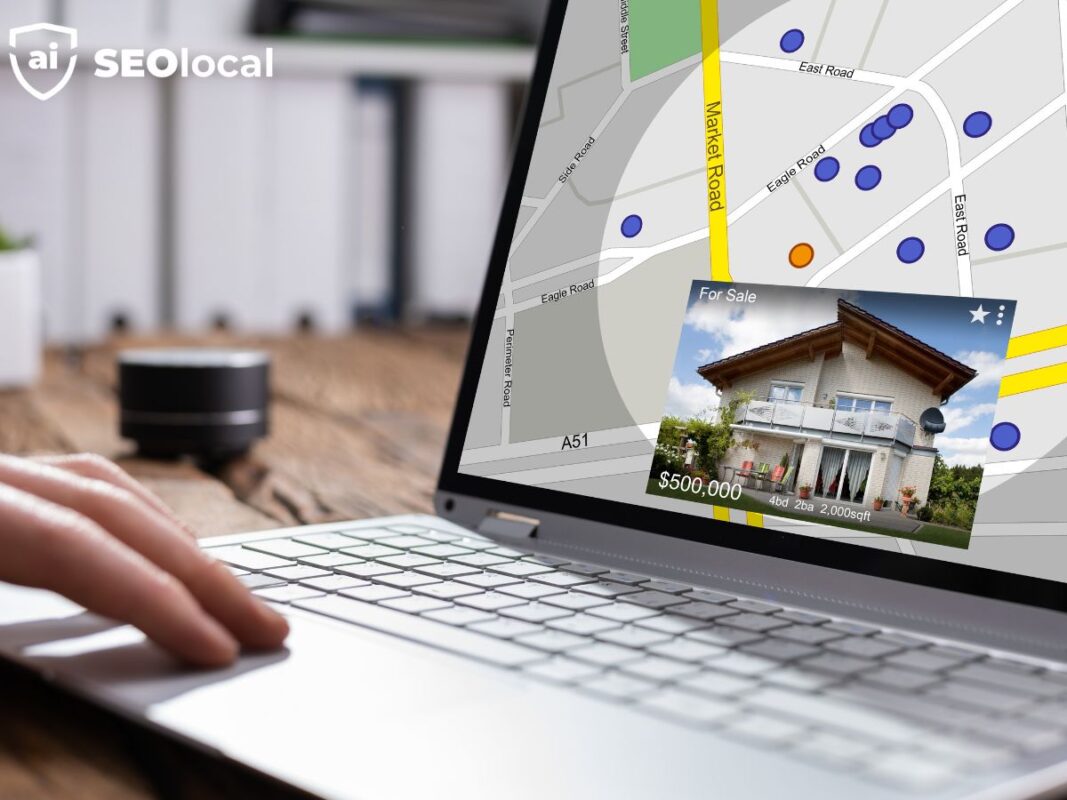- Advanced Local SEO Strategies
- Fundamentals of Local SEO
- Google Business Profile (GBP) Optimization
- Local Keywords and Content Strategy
- Local Link Building
- Local Paid Advertising
- Local Search Ranking Factors
- Local SEO Best Practices
- Local SEO Tools and Analytics
- Local Social Media Marketing
- Online Reviews and Reputation Management
- Technical SEO for Local Businesses
Local SEO Glossary for Beginners: A Comprehensive Guide

Navigating the world of digital visibility requires understanding how businesses appear in location-specific results. This guide breaks down core concepts for improving your presence in geographic searches, using clear explanations free of technical overload.
You’ll discover how targeting specific areas differs from broader digital strategies. Geographic optimization focuses on matching user queries containing city names or phrases like “near me”. Search engines prioritize these signals to connect people with nearby solutions.
We simplify industry jargon like citations and geo-targeting. Learn how consistent business details across platforms boost visibility. Explore how structured data helps algorithms interpret your offerings accurately.
Key Takeaways
- Location-based optimization targets users searching for nearby services
- Business listings require consistent name, address, and phone information
- Search algorithms prioritize relevance to geographic queries
- Structured data helps search engines understand location context
- Visibility in maps and local results requires specialized strategies
This resource combines practical definitions with real-world examples. Understand what makes your website stand out in location-based searches without complex terminology.
Introduction to Local SEO for Beginners
When customers look for nearby services, appearing in their search results demands more than standard online strategies. Geographic optimization tailors your visibility to match queries like “coffee shops near me” or “Brooklyn plumbing services.” Search engines prioritize businesses that align with both the user’s needs and physical location.
Three core principles govern location-based visibility. Relevance ensures your offerings match search intent. Distance calculates proximity between customers and your business. Prominence reflects your reputation through reviews and accurate listings. These factors determine rankings when users seek immediate solutions.
Consistency matters across directories and websites. Mismatched addresses or phone numbers confuse algorithms and reduce credibility. Search engines cross-reference data to verify business legitimacy, favoring those with uniform details.
Unlike general results, location-specific rankings emphasize real-world proximity. A bakery three blocks away might outrank a larger chain farther from the searcher. This makes optimizing for maps and “near me” queries critical for brick-and-mortar operations.

Essential Local SEO Terms and Definitions
Understanding key phrases helps you optimize your visibility in geographic searches. Let’s break down foundational concepts without overwhelming technical details.
Anchor text refers to clickable words in hyperlinks that describe what the linked page offers. Instead of generic phrases like “click here,” use specific terms like “Brooklyn coffee shop hours.” This helps search engines understand connections between pages.
Citations are online mentions of your business name, address, and phone number. These appear in directories, reviews, or articles. Consistent citations across platforms build trust with search algorithms.
Maintaining NAP consistency (Name, Address, Phone) ensures your details match everywhere. Even minor differences like “St” versus “Street” can confuse search engines and hurt rankings.
Geo-modifiers are location-based keywords added to searches, such as “dentist Chicago.” Including these in your content signals relevance to users seeking nearby solutions.
The local pack displays three map-based listings for nearby businesses. Appearing here requires accurate profiles and positive reviews. These results often get more clicks than standard search listings.
Proximity measures how close you are to the searcher. While important, it’s balanced with relevance and reputation. A well-optimized business two miles away might outrank a closer competitor with poor information.
Relevance determines if your services match user needs. A bakery using keywords like “fresh croissants downtown” aligns better with specific searches than generic terms like “baked goods.”
Local SEO Glossary for Beginners
Mastering location-based marketing starts with clear definitions of specialized terms. This alphabetical reference helps you decode concepts shaping how companies appear in geographic queries.
- Apple Business Connect: A platform for managing profiles on Apple Maps. Verified businesses can update photos, hours, and respond to customer messages.
- Average Star Rating: A visible score based on user reviews. Updates may take 14 days to reflect changes across search engine results.
- Bulk Management: Tools letting multi-location brands edit profiles simultaneously. Essential for chains updating holiday hours or menu changes.
- Centroid: The central point search engines use to measure proximity. Businesses near this area often rank higher in location-based queries.
- Citation Campaigns: Systematic efforts to create or correct business mentions online. Improves credibility in engine results when data matches across directories.
- Data Aggregators: Companies like Factual or Neustar that distribute verified business details to websites and apps. Inconsistent information here can harm visibility.
- Duplicate Listings: Multiple profiles for one location on platforms like Google. Merging these prevents confusion in search rankings and customer interactions.
These terms form the foundation for optimizing physical locations in digital spaces. Consistent implementation helps your page appear when users search for nearby solutions.
Navigating Local Search Engine Optimization
Building visibility in area-specific searches requires a structured approach. Start by optimizing your Google Business Profile – this single step impacts 25% of ranking factors. Verify your details match across directories and update hours/services regularly.
- Profile accuracy: Complete every field with current information
- On-page signals: Include city names and service areas in page titles
- Review management: Respond professionally to feedback
- Link building: Earn mentions from community websites
Track progress using free tools like Google Search Console. Look for improvements in map pack appearances and phone call volume. Monthly check-ins help identify what’s working.
Balance technical adjustments with customer needs. Fast-loading pages with clear contact info satisfy both users and algorithms. Update content quarterly to reflect seasonal offerings or service changes.
Remember that changes compound over time. Fixing duplicate listings today might boost review responses next month. Consistent effort creates lasting visibility in geographic results.
Business Listings, Citations, and NAP Consistency
Your customers trust search results that show identical details everywhere. Mismatched phone numbers or addresses create doubt and hurt visibility. Search engines cross-check your business information across platforms to verify legitimacy.
NAP consistency means keeping your name, address, and phone number identical on every platform. Even small variations like “Ave” instead of “Avenue” confuse algorithms. This consistency helps engines validate your operations and improves rankings.
Citations come in two forms:

| Type | Description | Examples |
|---|---|---|
| Structured | Formal directory entries | Yelp, Chamber of Commerce sites |
| Unstructured | Mentions in articles/social media | Blog posts, news coverage |
Audit your existing listings quarterly. Use free tools to find conflicting details. Prioritize fixing entries on data aggregators like Factual – these feed information to major directories.
Build new citations gradually. Focus on industry-specific platforms first, then expand. Track changes in your search performance after each update.
Maintenance matters most. Update holiday hours or new phone numbers within 48 hours. Consistent information builds trust with both customers and search algorithms over time.
Google Business Profile: Overview and Best Practices
Optimizing your online presence starts with mastering your digital storefront. A well-maintained profile connects your physical location with customers searching for your services. This free tool acts as your 24/7 virtual receptionist across Google platforms.
Managing and Verifying Your Profile
Begin by claiming your listing through Google’s verification process. You’ll receive a postcard with a unique code at your business address within 14 days. This security step prevents unauthorized changes to your information.
Keep these elements updated for maximum impact:
- Operating hours (including holiday schedules)
- Service area boundaries
- Current photos of your location/products
- Responses to customer questions and reviews
Leveraging Profile Attributes
Attributes help customers understand your offerings at a glance. Select wheelchair accessibility options or bilingual staff details from preset options. User-generated tags from reviews highlight popular features like “outdoor seating” or “free parking.”
| Common Mistake | Impact | Best Practice |
|---|---|---|
| Inconsistent phone number | Confuses search algorithms | Audit listings monthly |
| Generic category selection | Misses relevant searches | Use specific primary category |
| Infrequent post updates | Reduces engagement | Share weekly offers/events |
Monitor profile insights to see how users find you. Track map views versus web searches to adjust your strategy. The Q&A section helps address common customer concerns before they call.
Importance of Reviews, Ratings, and Reputation
Customer feedback shapes how businesses appear in digital spaces. Positive reviews act as trust signals that influence search engine rankings and customer choices. Search algorithms analyze ratings to determine which companies deserve top spots in results.
Your average star rating combines multiple factors beyond simple math. Recent reviews carry more weight, but updates may take 14 days to reflect fully. This delay ensures platforms verify authenticity before adjusting scores.
Review velocity matters – steady feedback beats sporadic bursts. Three new reviews weekly often outperform 15 monthly. Consistency shows search engines your business maintains quality over time.
| Platform | Response Time | Visibility Impact |
|---|---|---|
| 48 hours | High | |
| Yelp | 7 days | Medium |
| 24 hours | High | |
| Industry Sites | Varies | Specialized |
Encourage reviews ethically by providing exceptional service. Follow up with polite reminders via email or receipts. Never offer incentives – platforms penalize manipulated feedback.
Respond professionally to all reviews. Thank happy customers and address concerns publicly. This demonstrates your commitment to improvement, boosting reputation in search results.
Manage profiles across major platforms and niche directories. Unified responses strengthen your digital presence. Search engines prioritize businesses with active, well-maintained profiles.
Building Local Backlinks and Authority
Establishing credibility in your community strengthens your digital presence. Search engines prioritize websites with connections to trusted area organizations. These relationships signal relevance to users seeking nearby solutions.
Earning Backlinks Through Directories
Quality directories act as digital referrals. Focus on platforms tied to your industry or region. Partner with chambers of commerce or neighborhood associations for authentic mentions. Verify directory listings use accurate details to boost domain authority.
Diversifying Anchor Text Strategies
Natural linking phrases improve search performance without appearing forced. Mix branded terms (“Smith & Sons Hardware”) with descriptive phrases (“best Denver tool rentals”). Avoid repetitive keywords – engines favor varied, context-rich links that mirror real conversations.
Collaborate with complementary businesses for mutual benefits. A bakery might partner with a coffee roaster for cross-promotion. Such partnerships often yield organic mentions on websites and blogs, creating sustainable link growth.
FAQ
How does optimizing for nearby searches differ from general search strategies?
Targeting nearby searches focuses on geographic keywords, business listings, and proximity-based signals. It prioritizes visibility in map packs and directory platforms like Google Maps, whereas general strategies often emphasize broader organic rankings.
What role do structured data markups play in improving visibility?
Structured data helps platforms understand your business type, hours, and location. This clarity enhances how information appears in search engine results, potentially increasing click-through rates for location-specific queries.
Why should businesses prioritize directory listings beyond Google?
Diverse citations on platforms like Yelp, Apple Maps, and Bing build domain authority and reinforce NAP (Name, Address, Phone) consistency. This cross-platform verification strengthens trust with both users and ranking algorithms.
How do customer reviews impact search performance?
Positive ratings signal credibility to potential customers and algorithms. Platforms like Google prioritize businesses with recent, authentic reviews in their results, making reputation management a ranking factor.
What’s the risk of using identical anchor text for all backlinks?
Overusing the same keyword-rich anchor text can trigger spam filters. A natural mix of branded terms, URLs, and varied phrases aligns with search engine guidelines while maintaining link-building effectiveness.
Can incorrect business hours affect online performance?
Yes. Outdated or inaccurate operating hours frustrate users and lead to negative reviews. Search engines may demote listings with inconsistent data, reducing visibility in time-sensitive queries.
Why do some profiles appear in map packs without top organic rankings?
Map pack algorithms prioritize relevance, proximity, and prominence differently than organic results. A well-optimized Google Business Profile with complete attributes often outperforms generic web pages for hyperlocal searches.

